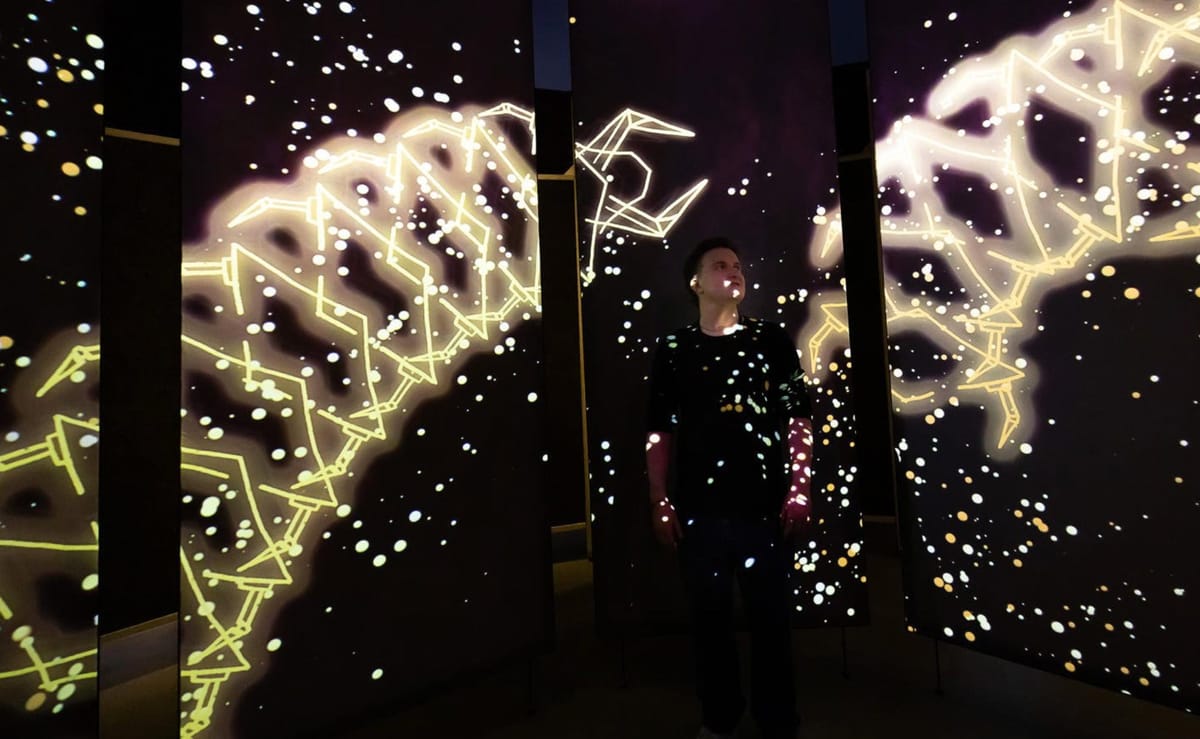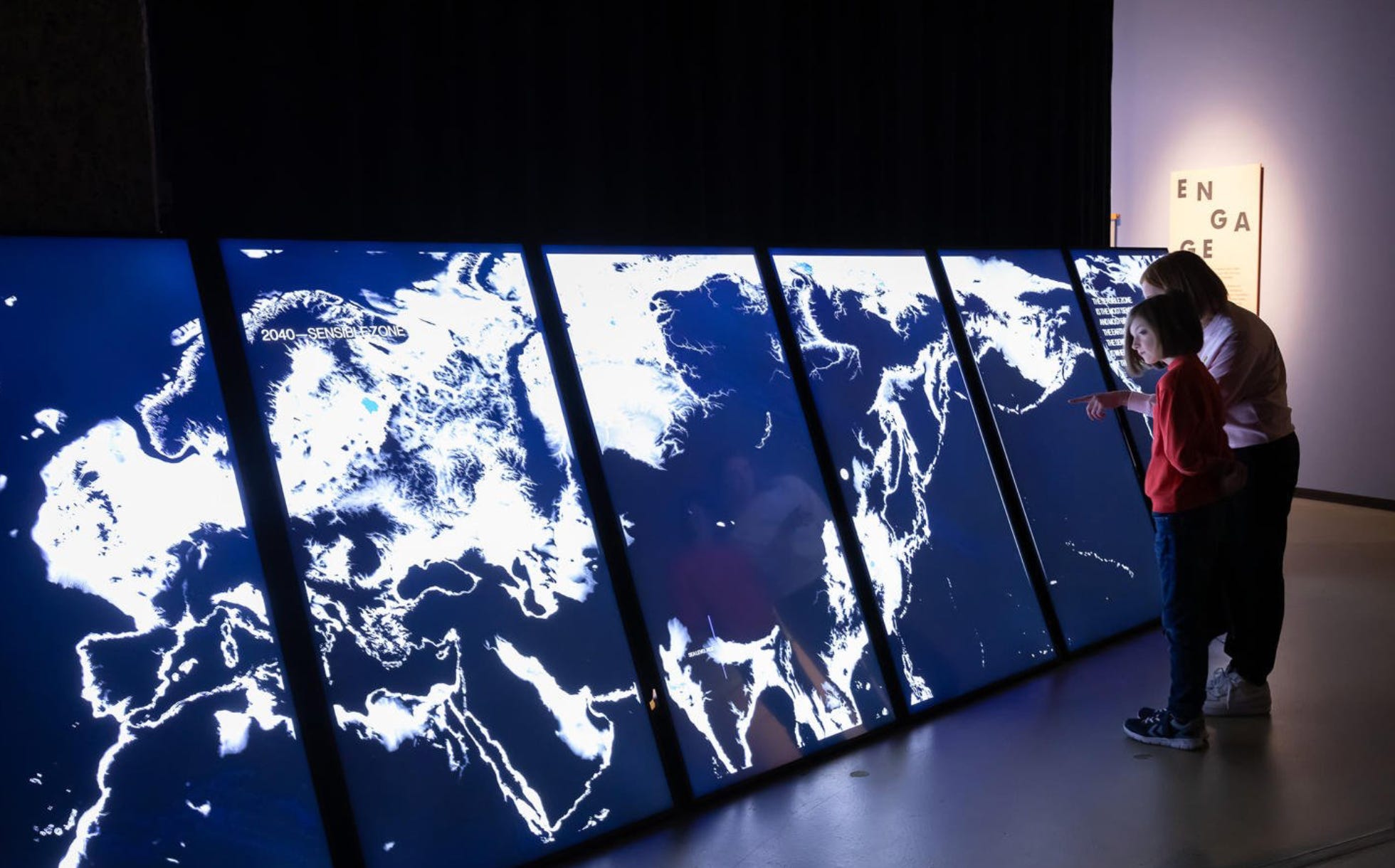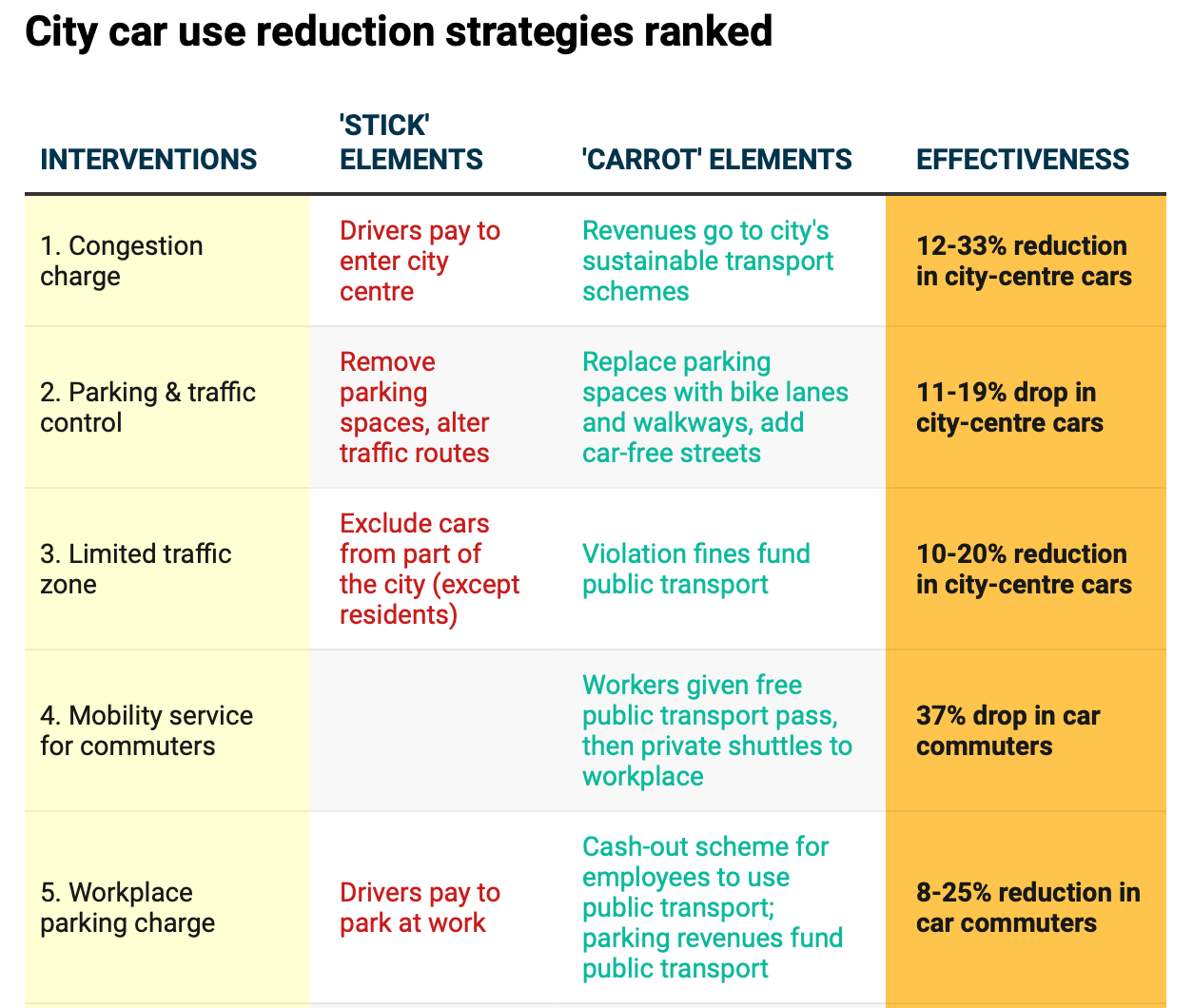
"We belong to an incredible ecosystem. One species among millions of others, striving to live together in a delicate balance”. The Barbican’s new show, Our Time on Earth, is “an immersive exploration of radical ideas for the way we live” across three sections, Belong, Imagine and Engage. Created with guest curators Caroline Till and Kate Franklin, the show mixes art, science, activism and more with contributions from Marshmallow Laser Feast, Holition, SilentStudios and more. “Imagine sitting down to eat, next to diners from other species. Commuting through a rewilded city, over a bridge made of roots. Immersing yourself in the magnificent underground world of soil.” The show is in the Barbican’s Curve space until 29 August. Details here

The V&A’s Head of Design Evonne Mackenzie has written about how the institution’s commitments to Net Zero and circular design are “transforming how we approach the design of buildings, interiors, temporary exhibitions and events”. Read her piece here

London’s Clerkenwell Design Week returns from 24 to 26 May. The Conversations at Clerkenwell series of discussions at Spa Fields, Northampton Road EC1 includes sessions on Biophilic Design in Practice with Sam McCarthy of Plant Designs, Closing the Loop: What is the furniture industry doing to marry a circular vision with the reality of a sector which thrives in part, on fashion and change? And Materials Matter: A discussion on responsible design and the importance of materials, in the fight towards a circular and sustainable future. Details of all the sessions here
On May 17, Service design practice Snook is running an online workshop on Designing for Inclusion and Sustainability. The half-day workshop “will explore the importance of centering people and inclusion when designing for sustainability. We'll consider this by sharing a process in which disabled people imagine journeys in the future that will be both low carbon and inclusive,” Snook say. “The course will explore, through a lively mix of talks, team work and workshopping, what “accessible transport” means or can mean.” Details here

New research carried out with Paula Kuss at the Lund University Centre for Sustainability Studies and published in Case Studies on Transport Policy, attempts to quantify the effectiveness of different initiatives to reduce urban car use. It ranks the 12 most effective measures that European cities have introduced in recent decades, “based on real-world data on innovations ranging from the “carrot” of bike and walk-to-work schemes to the “stick” of removing free parking,” according to a report on The Conversation. “The most effective measures, according to our review, are introducing a congestion charge, which reduces urban car levels by anywhere from 12% to 33%, and creating car-free streets and separated bike lanes, which has been found to lower car use in city centres by up to 20%.” Read the piece here

